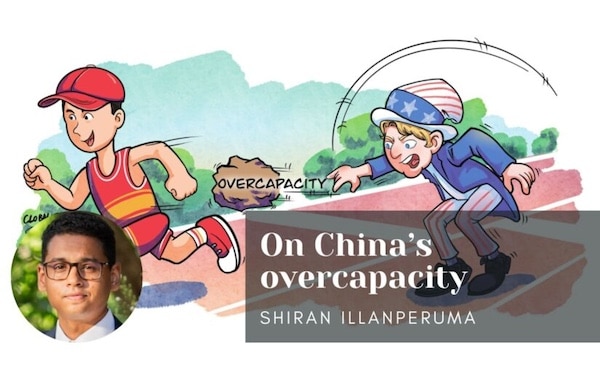By Jin Ruiting
Recently, some American politicians have been continuously hyping up the false narrative of “overcapacity” in China’s new energy industry.
They wrongly claimed that China has excessive production capacities in new energy vehicles (NEVs), lithium-ion batteries and photovoltaic products, asserting that the so-called “overcapacity” has posed negative impacts on global markets. Such claim is not fact-based and goes against the overall trend of economic globalization.
As a matter of fact, the “overcapacity” narrative is a well-worn tactic of the United States to undermine other countries’ competitive industries, which is driven by a hegemonic mindset.
“Overcapacity” doesn’t exist at all in China’s new energy industry.
China’s new energy industry has higher capacity utilization rates than other countries. An opinion piece from Just Auto, a London-based magazine providing global automotive industry news and analysis, shows that in 2023, the capacity utilization rates of auto companies in China such as BYD Group, Tesla’s Shanghai factory, and SAIC Group were around 80 percent. In comparison, Hyundai Motor’s capacity utilization rate was only 23 percent, and Kia Motor’s was only 25 percent.
The current production capacity of the global new energy industry is far from sufficient to meet the market demand.
According to the International Energy Agency (IEA), the global demand for NEVs will reach 45 million units by 2030, which is more than three times the global sales in 2023 and nearly five times the production in China in 2023. The global demand for power batteries will reach 3,500 GWh by 2030, which is more than four times the global volume in 2023 and more than five times the production volume in China in 2023.
According to the International Renewable Energy Agency (IRENA), in order to achieve the Paris Agreement goals, the global cumulative photovoltaic installed capacity needs to exceed 5,400 GW by 2030, which is nearly four times the global cumulative installed capacity in 2023 and about nine times the cumulative installed capacity in China in 2023.
The “overcapacity” narrative contradicts economic common sense.
According to economic law, countries participating in the global division of labor based on their comparative advantages is an important path to improve the global allocation of resources and an important way to improve productivity and people’s wellbeing.
In recent years, China’s new energy industry has achieved rapid development through vigorous market competition and continuous technological innovation – a fact evident to the international community.
China has always adhered to the principles of opening up and sharing, forming close industrial chain cooperation with various countries. This has promoted the improvement and upgrading of the global industrial chain, providing strong momentum for the new energy industry worldwide.
Labeling China’s new energy industry with “overcapacity” goes against the international division of labor and violates the principles of free trade and fair competition. It ignores the vital role of international trade in improving the wellbeing of people around the world.
China’s strengths in the new energy industry have been hard-earned through true capabilities and competitiveness.
China enjoys a comparative advantage stemming from its complete range of sectors and categories in manufacturing. China has been the world’s top manufacturing country for 14 consecutive years, with the added value of the manufacturing sector accounting for around 30 percent of the world’s total in 2023.
In the new energy sector, the country has developed a complete industrial chain encompassing material research, engineering design, manufacturing management, and final assembly and systems integration.
China benefits immensely from its vast domestic market and rich diversity of application scenarios. In 2023, both production and sales of China’s NEVs exceeded 9 million units, maintaining robust growth momentum. China’s huge consumer market provides a favorable environment for the research, development, and upgrade of new energy technologies.
Offering high-quality and affordable green products for countries worldwide, China has made a vital contribution to the global green and low-carbon transition.
(Jin Ruiting is a researcher with the Institute of Macroeconomic Research of the National Development and Reform Commission)













